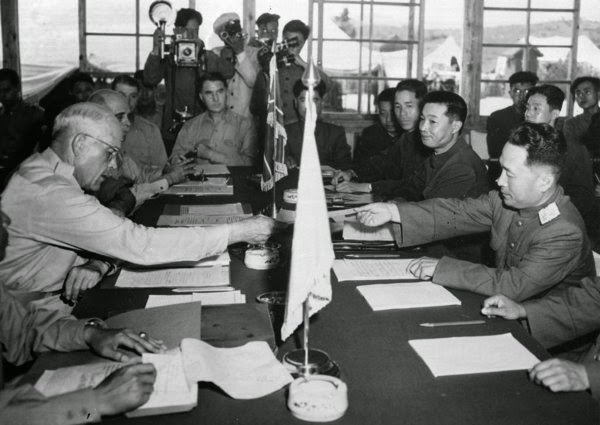THE Korean War (1950-1953) was an armed conflict that took place on the Korean Peninsula and divided the country into North and South Korea.
Technically, the conflict is not over, as no peace treaty was signed, just an armistice on July 27, 1953.
Causes of Korean War
Korea was invaded and taken over by Japan during World War II. Even before the end of the war, the 38° North parallel had already been determined as the geographical limit for the military performance of the Soviets and North Americans.
In this way, after Japan's defeat, Korea was split, in 1945, between North Americans and Soviets.
Thus, the established limits were transformed into real division, giving rise to two Korean States, under the occupation of each of the two powers:
- the Democratic People's Republic of North Korea, under Soviet occupation;
- the Republic of Korea, to the south, under US rule.
Conflicts and the Peace Agreement

The border region between the two Koreas became an area of successive armed conflicts, especially due to the political-ideological divergences between the two States and the tension generated by the Cold War.
The victory of communists led by Mao Tse-tung, in China, in late 1949, served as a motivation for the North Koreans to attempt an invasion. So they launched a surprise attack to the south on June 25, 1950, alleging violation of the 38th parallel.
The UN Security Council authorized the United States and its allies to send troops to the region, under the command of General MacArthur (1880-1964).
China and the Soviet Union supported the North Koreans who conquered most of the peninsula. Bloody battles caused the death of millions of people, most of them civilians.
General MacArthur demanded that he be given full powers, including the use of nuclear weapons, to end the war. But US President Harry Truman (1884-1972) decided to launch peace talks.
End of Korean War and the armistice

On July 27, 1953, the peace armistice in Panmunjon was signed, re-establishing the borders on the 38° North parallel.
In this way, the borders returned to what had been determined during World War II: North Korea remained communist and the one in the south, capitalist.
Aftermath of the Korean War
The maintenance of the division in North and South continued with the climate of tension and border frictions that remain until today.
North Korea counted on Soviet and Chinese help, remaining linked to the countries of the socialist bloc. The country was ruled by Kim II-sung, who remained in power until his death in 1994, when he was succeeded by his son Kim Jong-il.
this would name his son Kim Jong-un, for president, in December 2011 and is the current president of the country.
South Korea, in turn, moved from the condition of an agrarian country to that of an "Asian tiger". It received foreign investments and technology, rising to the position of one of the most developed nations in the world.
peace for koreas
In 1987, the two countries decided to start talks for a possible rapprochement, after decades of attacks and terrorist attacks such as the explosion of the Korean Air plane,
The visit of South Korean President Moon Jae-in to his North Korean counterpart, Kim Jong-un, in April 2018, could inaugurate the agreements to end the last open conflict of the Cold War.
Read more:
- Conflict between the United States and North Korea
- Greatest Dictators in History
- Vietnam War
- Asian countries
- Cold War Conflicts
Bibliographic references
DOCUMENTAL Galafilms - "Korea - the unfinisehd war", Year: 2003. Directed by: Brian McKenna. Screenplay: Brian McKenna and Terence McKenna. Canada.
